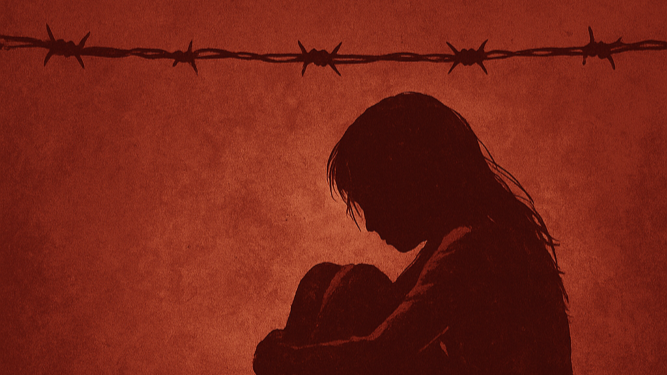
Originally published October 29.2025.
From the age of three until I was 18 I was repeatedly sexually assaulted by people I trusted. I am not alone. One in four people in Canada were sexually assaulted as children or young people. That adds up to more than 10 million people living with the same trauma I carry. Worldwide, the number is well over 2 billion — children abused who grew into adults still fighting to breathe.
I am a warrior. I fight to survive child sexual violence. I will spend the rest of my days confronting this, speaking out, and helping others. To mark the start of this journey, I recently published a book titled Breathing the Night Out, sharing my life story and the ways I continue to heal.
In the United States the rate is one in five, not one in four. That makes roughly 66.6 million survivors. If the US had Canada’s rate, that number would jump to about 83.25 million. Compared with our neighbours down south, child sexual violence is about 25% higher in Canada.
This higher reported rate is not the result of one thing. It’s a knot of history, culture, law and geography:
• Measurement and reporting — Canada’s surveys often use broader definitions of sexual violence and include non-contact and online abuse. That catches hidden cases that some US systems tied to criminal records miss.
• Colonial legacy and intergenerational trauma — Canada’s residential school system normalised institutional abuse which was managed by the Christians. The 500+ year old damage runs down generations, and Indigenous children remain overrepresented in child welfare. As well as, Indigenous adults (all genders) consist of the highest cohort in the Canadian prison system.
• Cultural and institutional silence — hierarchical institutions, deference to authority and a national habit of politeness have hidden abuse in churches, schools, sports and small communities.
• Disclosure differences — Canada’s comparatively higher trust in some social services can mean more people report abuse. That raises prevalence figures but also shows some survivors feel safer to speak.
• Isolation — rural and northern communities are often under-resourced. Distance and limited services give perpetrators room to act and survivors less chance of help.
• Deep silence — a national unwillingness to face painful truths has allowed abuse to persist and go unchallenged for too long.
*One more truth about statistics: funding incentives shape them. In many provinces and countries, agencies serving survivors only receive funding when they report high need. On the other side, some agencies only get renewed funding when they demonstrate high “success rates.” These pressures can push numbers in both directions. This doesn’t mean the work isn’t real — it means the system rewards certain data. So every statistic about child sexual violence should be read with caution.
Put together, these things suggest Canada’s higher rate isn’t just that more harm happens here. It’s also that more of what was hidden is finally being counted — and that the systems and culture that allowed it have not yet done the work to stop it.
What number do we need to reach before Canada’s health-care system offers real mental health support — not just pills to numb the pain, but proper therapy that helps people heal?
This is the original war — the war against children. Control the children, and you control the parents. Control the parents, and you control the world.
But here’s the beauty buried in the evil: No one can stop love. It is unstoppable. And we can come together.
Together, we heal. Together, we breathe the night out.
Gender
Look at how this violence hits differently. In Canada, one in three girls and one in five boys will be sexually assaulted before their 18th birthday. Let that sink in. These aren’t stats. They are children silenced and carrying trauma into adulthood.
Call to action
Here’s the truth: Indigenous, Black, Asian, disabled and trans children are hit even harder. The numbers are higher, but you won’t easily find them — because counting these lives makes those in power uncomfortable.
Silence is violence. We cannot stay silent. We must:
• Speak.
• Act.
• Demand accountability.
Every child deserves to be seen, heard and protected.
A challenge
If you’re thinking about graduate school, especially if you come from an underserved or targeted community and you have lived experience of child sexual violence, study this. Make it your thesis. Make it your PhD. Dig until the data can’t be ignored. Build the evidence that forces Canada — and the world — to face the full truth.
Until we name it, count it and confront it, the violence keeps winning.
References:
Badgley, R. F. (1984). Sexual offenses against children: Report of the Committee on Sexual Offenses Against Children and Youth.
Centers for Disease Control and Prevention. (2011). National Intimate Partner and Sexual Violence Survey (NISVS): 2010 summary report.
Hillis, S., Mercy, J., Amobi, A., & Kress, H. (2016). Global prevalence of past-year violence against children: A systematic review and minimum estimates. Pediatrics, 137(3), e20154079.
Statistics Canada. (2018). Childhood victimization and its association with mental health.
Statistics Canada. (2023). Population estimates, quarterly.
Truth and Reconciliation Commission of Canada. (2015). Honouring the truth, reconciling for the future.
UNICEF. (2020). Sexual violence against children: Fast facts.
U.S. Census Bureau. (2023). National population totals and components of change.
